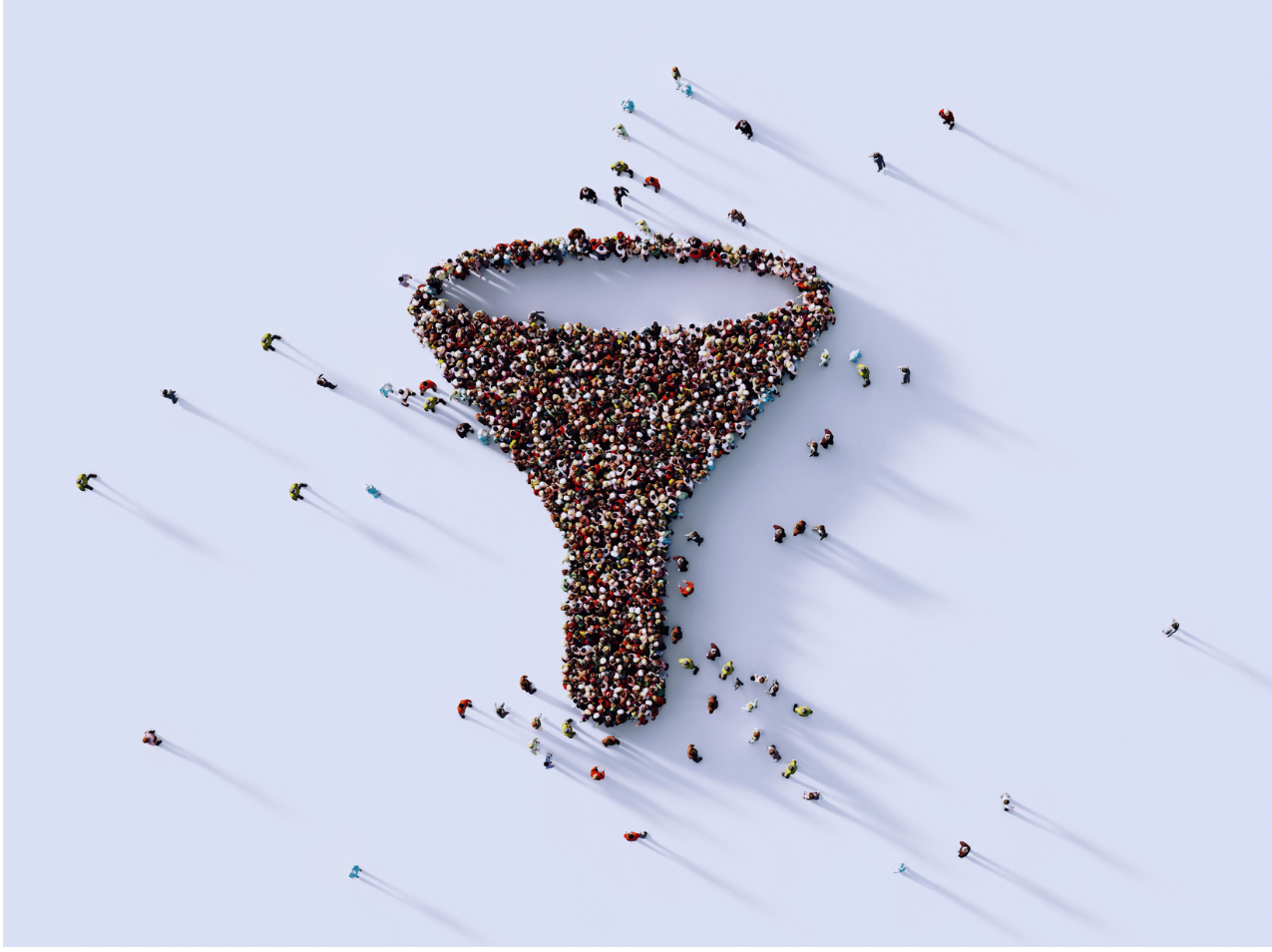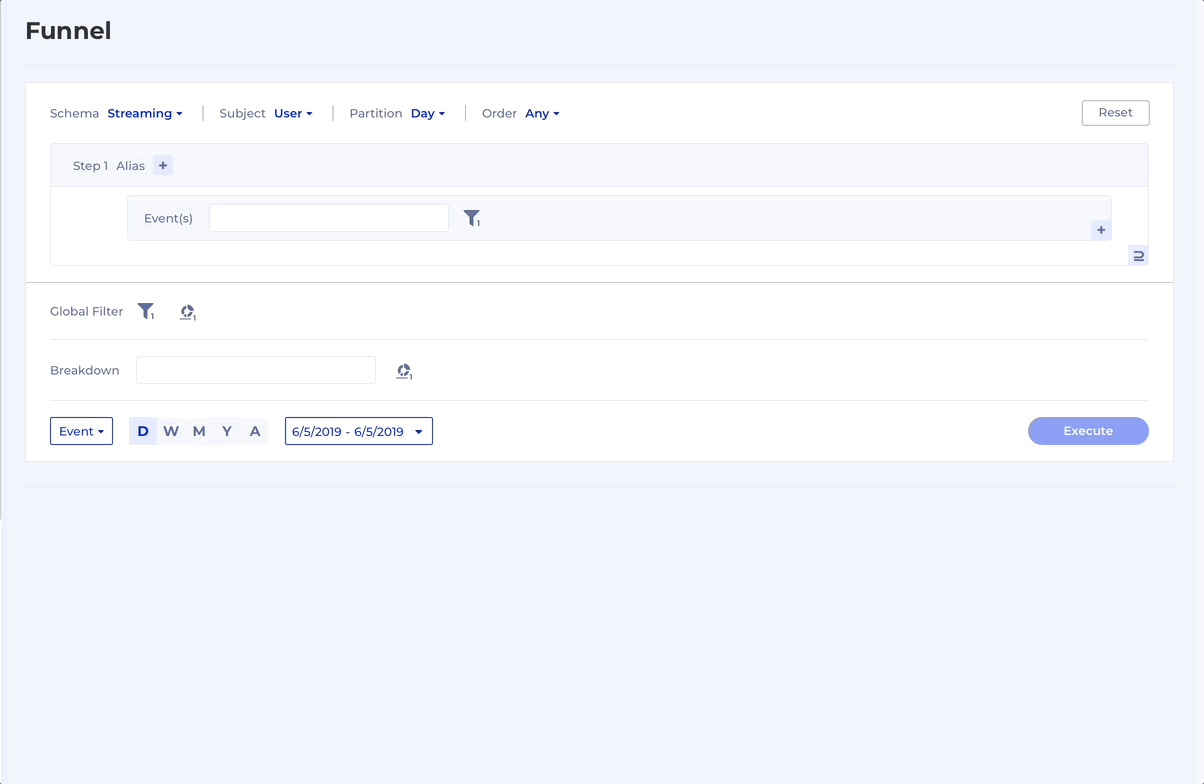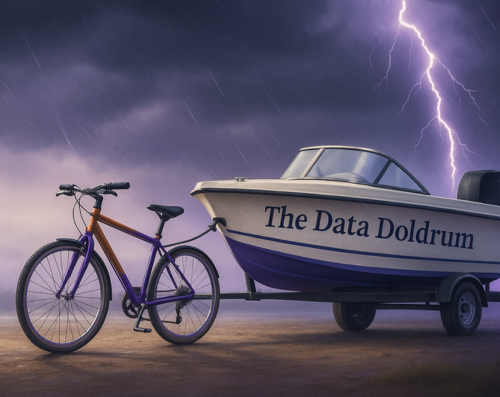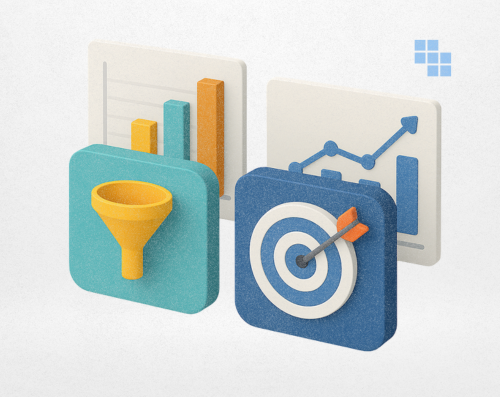
What is funnel analysis?
Funnel analysis is an essential way to observe and describe a customer journey as a process with different stages that users go through. It usually involves several steps, from entering an app or web page to performing a particular action. It is called a funnel because of its shape that becomes narrower and narrower. By observing your funnel, and analyzing and adjusting its parameters, you will be able to improve conversions and customer satisfaction.
The funnel is an excellent tool for marketers, product managers, sales, and data scientists to understand user behavior better. Whether you wish to convert visitors into customers or you want your customers to buy more of your products, or even make them stay more in your app, funnel analysis is essential. Having a good understanding of your funnel is like using a GPS to guide you to a place you want to visit. It will show you the speed, the direction, and whether you’re on time or going to be late.
Conversion rates can help you understand the number of visitors who came to your website and bought a product or performed an action, such as watching a movie, downloading a document or submitting a lead form.
Why Are Conversion Funnels Important?
In product analytics conversion funnels provide the means for teams to look at specific user journeys through different lenses. Conversion funnels are often used to understand where the drop-off points and areas of friction are and then to measure the effect of any improvements that are being made.
For example, let’s say your organization has a subscription-based business model and the main focus is to drive more subscriptions. Now this is a complex issue and usually there’s no obvious and straightforward answer, but funnels can help you start uncovering a solution. Here’s some typical questions to ponder:
- Is the top of the funnel not wide enough?
- Maybe users aren’t being asked to subscribe often enough?
- Are our campaigns working as expected?
- Is there a bug in the subscription workflow causing people to fail to subscribe?
- Do people get stuck on repeating a certain step in the subscription flow?
- Is the time to convert too long?
You may notice that some of these questions can lead to solutions in product, some in marketing and others in engineering. Customer journeys in the digital age are becoming more and more complex and as a result require more collaboration between marketing, product and engineering in order to get them just right. Measuring the conversion rates at each step of the user journey can provide the objectivity required in these discussions to help make better decisions.
Once you have a hypothesis you can establish baseline funnels and then run the experiments to measure the effect of your changes. Even better, once you have those funnels you can put them all on a dashboard and keep monitoring the conversion rates with every release to help you detect any anomalies or regressions. Now your teams can leverage all these insights to make data-informed decisions.
To sum up, conversion funnels are a powerful tool which can be leveraged to achieve multiple benefits:
- better understand user behavior
- define and optimize user journeys
- run better marketing campaigns
- improve collaboration between product, marketing and engineering teams
- track the customer experience over time
How does funnel analysis work?
There are steps you would expect your visitor to take, from entering your website or mobile app to taking an action, such as making a purchase. With a simple funnel analysis, you can visualize your visitors’ steps to convert. Creating a funnel allows you to observe where exactly visitors or users are dropping.
First, you collect data through user tracking, SEO, email campaigns and other methods. Note that you need to have your data available and ready for funnel analysis. Then you define the steps that will be evaluated.
A simple funnel tracks how users convert from entering a landing page to checking out, or watching a movie, or another goal conversion. The funnel itself is usually presented as a bar graph. You will know where to look next when you see a decline or drop in your funnel. Usually, this is the time when an imaginary light bulb shines above your head. Understanding each step of the funnel and making necessary adjustments to see what works and what doesn’t will eventually lead to more conversions.
Funnel Analysis Stages
When creating a funnel there are a few things you need to consider.
1. What is the purpose of funnel analysis?
Our goal may be to generate more leads, to achieve more transactions, to make people more engaged with your product, or something else. If you provide a streaming platform maybe daily active users (DAU) are your focus. Maybe you just developed a new feature and want to encourage people to start using it or you made a tweak somewhere in a particular user flow and want to measure the impact. Did users get stuck on a particular step in a flow? How much time is it taking for them to complete registration, subscription, or payment? Is it perhaps too much?
Whatever your goal, the purpose of funnel analysis is to allow you to identify all the critical touchpoints and measure the user’s journey through them. Once you have the measurement you can start making changes and quantify their impact.
2. What is the conversion rate you expect?
This is your benchmark to work from. And at first it can sound like a chicken and egg problem – which comes first – the funnel or the expected conversion rate? But in reality If you don’t have a funnel already it is very hard to have a well informed expectation.
Let’s say you’ve finished an outstanding marketing campaign. You forecast a significant increase in conversions. What will your funnel look like? You can compare older funnels, say Q1 is your benchmark and you compare to Q2 sales. Now you can measure if there is an improvement or not and by how much. If, for instance, you’re starting a business in a new country, you can correlate conversion rates. Or you can compare conversions between different versions of your app after every release. If there is a sudden drop maybe there is a non-obvious bug which made it all the way to production?
Over time you may also discover that there is a seasonality to your business or there are trends happening on a daily/weekly/monthly level. This all goes to say that conversion expectations are always dependent on some additional context which the analyst brings to the table.
3. What could you improve to raise the conversion rate?
In other words – how can you optimize your conversion rate? Maybe an ad campaign, discount offers, introduction of a new product or new service, additional benefits. Should they do the work?
You can A/B test your theories with real data examples and measure the significance of the experiments. Drill-down the different segments of users and how they compare and laser-focus on very specific user groups to target your improvements. Maybe one demographic isn’t responding to the ad campaign or is struggling with the adoption of a new feature? Or is it a country-specific issue which is positively impacted by your changes? You should use the improved results to achieve your goal. You can embed the analytical steps in your iterative process of bettering your product – just keep comparing funnels from different user segments as part of your release cycle to get a deeper insight into what the next step should be.
Please refer to Kubit’s Documentation to learn more about how to create a funnel.

Types of Funnels
Sometimes your customers don’t follow the path you have created for them. Users can enter your funnel in a variety of different ways. That’s why it is important to define your funnel. There are a few types of funnels:
- Open funnel – where users could enter any step and still be counted in the analyses
- Closed funnel – to be counted, a user should go from step 1 to step 2 to step 3, and so on. But there might be other steps, for example, between seeing a product and buying that product, a visitor might read a blog, compare products etc.
- Strict funnel – as the name says it means there are no other steps between the steps you define and if the visitor is not following that route, he won’t be counted in the analyses.
Do’s and Don’ts of Funnel Analysis
Funnel analysis shows you whether people are dropping off, but it doesn’t tell you why they do it. Brainstorm the potential issues. Is the registration process too long and hard to fill, do you have clear messages and good product descriptions, are there too many steps and blanks to fill in before ordering a product, etc.
Quality over quantity – it is vital to not just attract visitors but also to make them stay. If you want to increase the quantity, then observe from where your audience is coming – social media, Google ads, Internet search, etc. Increasing the number of visitors doesn’t guarantee higher conversion. But, proper maintenance of the funnel will help get the most out of your new users.
Fine-tune your filtering! Some customers might be looking for a particular product while others are just browsing. Filter out those who are not your target.
Conversion windows. If you are selling shoes, from first opening a product page to placing an order, it might take a couple of minutes, but if you are comparing streaming services, it will take a little longer to complete the task. Keep that in mind.
Funnel Analysis Benefits
- Allows you to determine key events on customers’ journey
- Improve customer experience and satisfaction
- Track any changes in your visitor habits
- Helps you decide where you can increase budget and where you can scale back
- Compare conversions between different dimensions like countries, genders, age buckets, app versions, and many other segments.
Example
A visitor is coming to your website, and he’s seeking products, then if the products are interesting enough, he will add them to the basket and then end up buying them. Let’s explore three stages of a user journey:
- Awareness stage – a user is on your website or an app, and they have a problem. You get the attention of your future customer or user.
- Review – the visitor is on the product/service page and scrolling up and down. He gets familiar with your product or service. Maybe he is comparing prices, using provided filters, and estimating how much he needs the product. Anyway, you’ll never know what’s in his head. As a result, he sees the solution for his problem in your website or app.
- Finally, he makes a decision. The visitor wants your product or service and makes a purchase. Congratulations, your visitor is now a customer.
That’s the ideal route, but sometimes visitors can go back and forth on the steps. Let’s dig a little deeper. Here’s where the true funnel analysis happens: If visitors are dropping off between 1st and 2nd steps, you should check whether there is enough information about the product. Are you providing helpful information like a help menu or a chat box, or anything visitors can use as guidance? If a visitor is dropping between the 2nd and 3rd steps, you should focus on prices, check competitors, and make sure you have a unique product or service. By observing where your visitors are dropping off, you can define your weak points and discover places where improvements should be made.
There is one final step – coming back or re-engaging. After seeing a customer making a purchase, you will want to invite them on another journey of being your repeat client. You can offer a discount on their next purchase, and sign for your newsletter, and like your social media page to support your cause.
Pro Tip
High drop-off usually means UI problems. But before scratching everything and returning to the drawing board, examine the audience who are dropping. Are they teenagers or elderly? Are they your targeted audience? If not, it’s a better idea to remove them from your funnel analysis.
Conclusion
Funnel analysis is a useful process that will support you on your way to building an exceptional product. However, it’s not the final phase. If you want to know the middle steps that your user or a visitor takes, consider doing a Path analysis and examining where your users are getting confused. Path analysis is an integral part of conversion rate optimization. We’ll cover this in a future post.
Want to see how Kubit can help you understand your user’s behavior? Get in touch with an expert to learn more.




